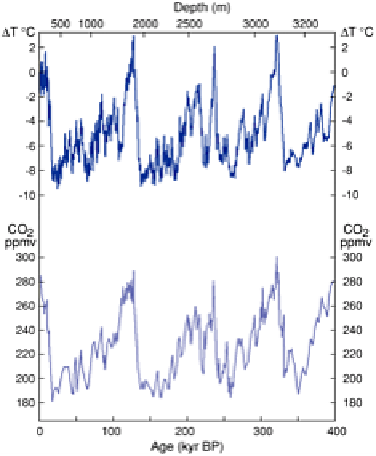Environmental Engineering Reference
In-Depth Information
being dispersed globally. The impact is less likely to be world-wide. A single major
eruption can have an immediate impact on global climate. As volcanic activity appears to
follow no pattern, it is possible that several eruptions could occur over a short period of
time to increase the particulate matter in the stratosphere and increase the potential
climatic impact. This effect may have contributed to the severity of the Little Ice Age,
with major eruptions in 1750-70 and 1810-35.
As well as volcanic dust, the atmosphere contains dust blown up from the surface.
Occasionally falls of red dust occur in Britain as Saharan dust has been carried
northwards. Adding to the effects of natural dust blow, agricultural activity may expose
bare soil and lead to major losses of topsoil through wind action. A classic example of
this was during the 1930s drought on the Great Plains of the central United States when
vast quantities of soil were swept up from the fields and deposited as far afield as New
York and Washington. As soil particles are usually heavier and are not ejected into the
atmosphere with the force of a volcanic explosion, their climatic impact tends to be more
local. However, they do backscatter sunlight whilst absorbing some long-wave radiation
from the ground. The precise effect depends upon the albedo of the surface. Man-made
particles cause net warming over snow and ice and most land surfaces but cooling over
the oceans, with their low albedo.
Another aspect of atmospheric composition which is known to vary is the proportion
of carbon dioxide (Figure 9.13). Carbon dioxide is one of the natural atmospheric gases
which contribute to the greenhouse effect. We would
Figure 9.13
Temperature relative to present and CO
2
variations recorded at Vostok deep ice core in Antarctica.
Source: Petit et al. (1999).

